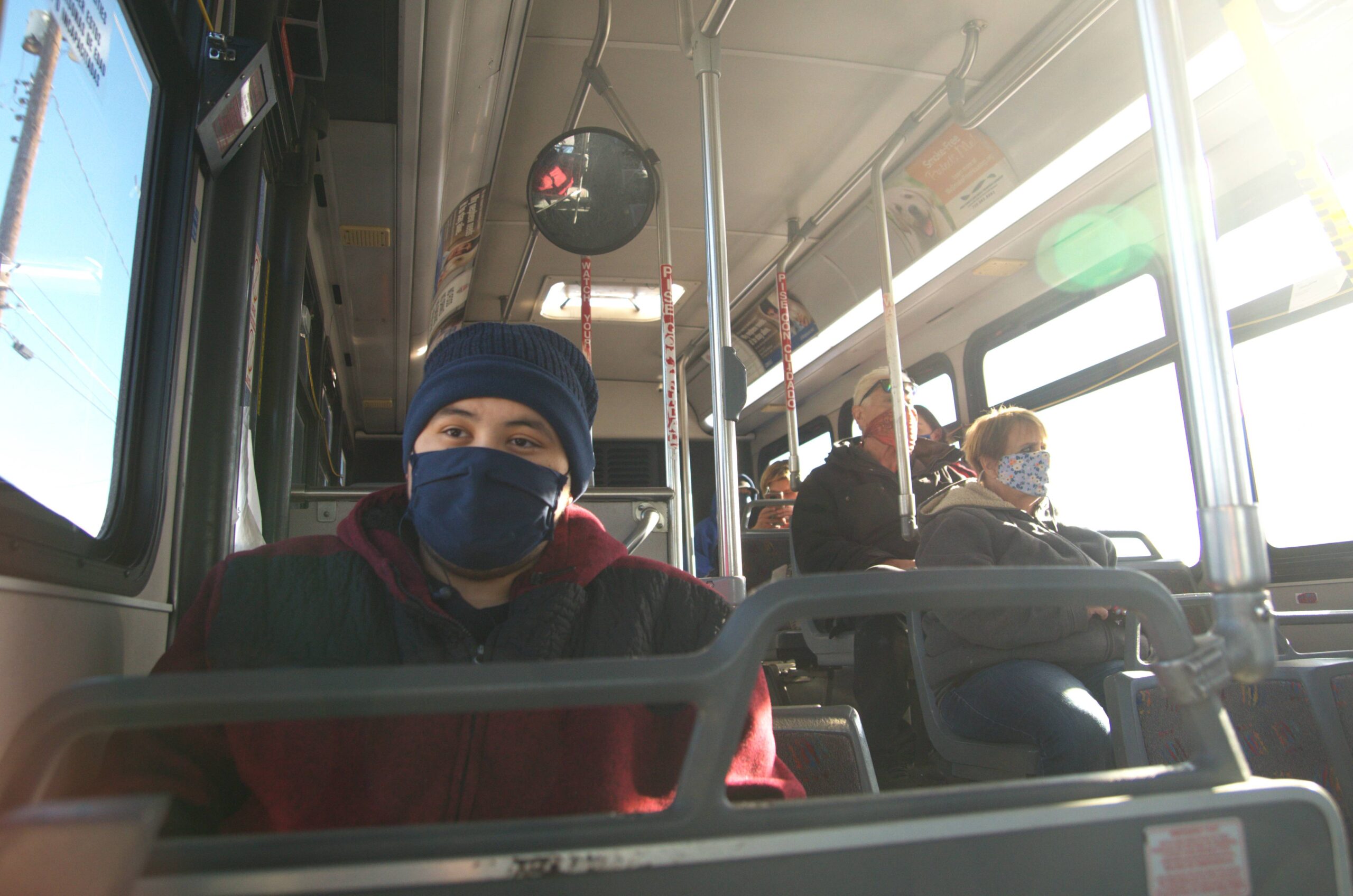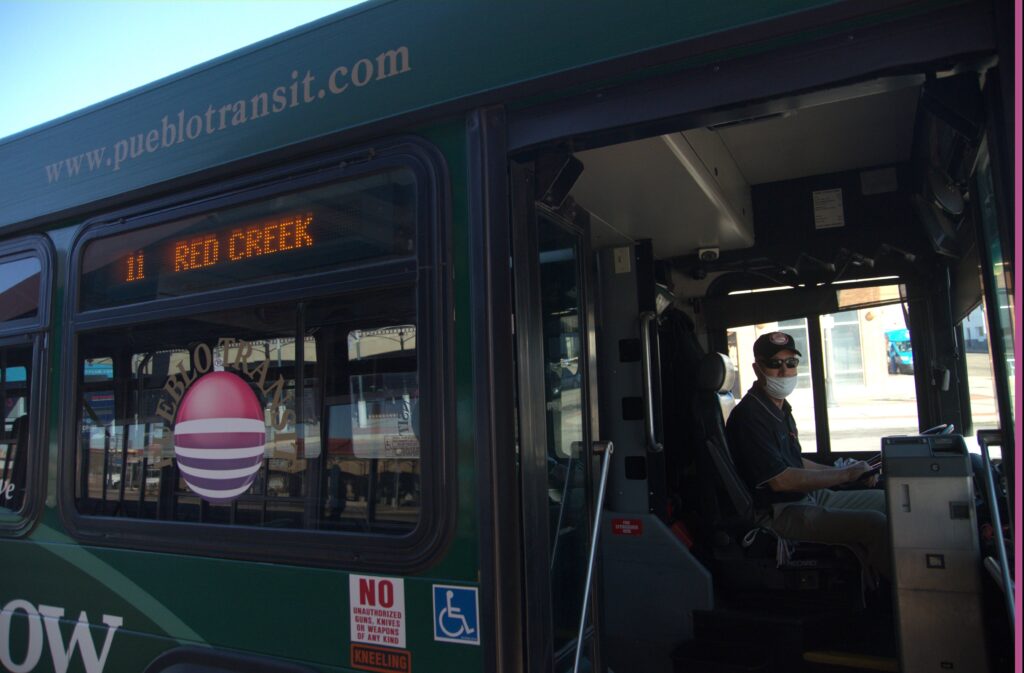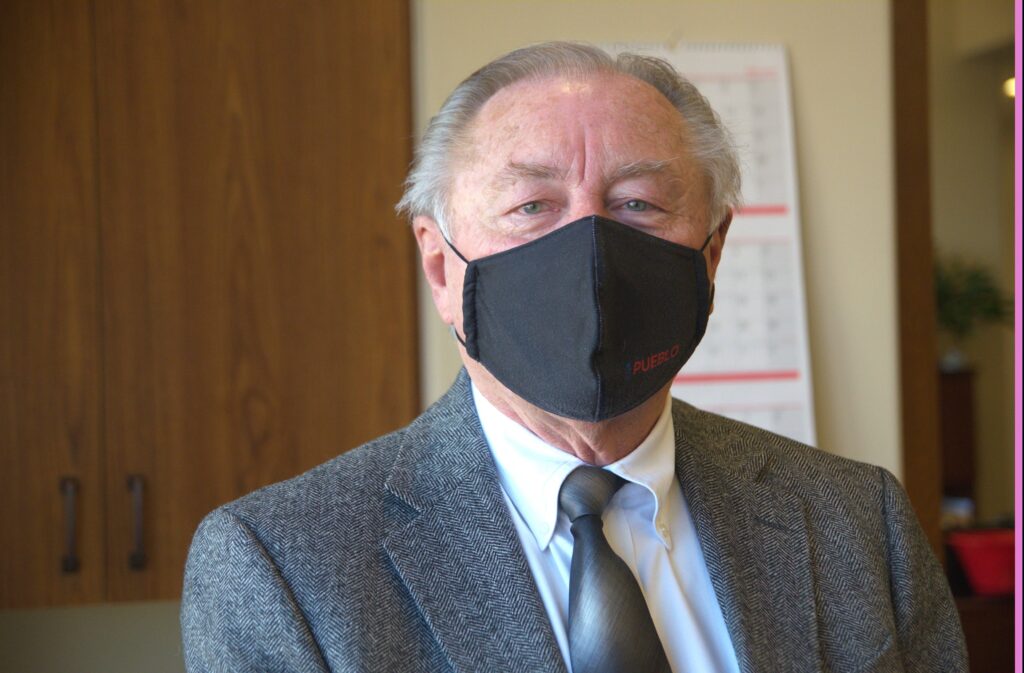
The route 11 bus was not exactly where Jesse Espinoza wanted to be on a recent morning. He had lost his job as a warehouse packer the day before and was on his way to sell plasma.
But he was grateful he had a way to get there.
“I really don’t have anyone to help me out,” the 21-year-old Pueblo native said as the bus rattled through the city’s southwest neighborhoods. “The bus is my only source of transportation right now. I could take a taxi or something, but when I’m broke the bus is really it.”
The bus also carried retirees and others who couldn’t drive for medical reasons to grocery stores, pharmacies and other essential errands. As transit ridership across the country has dropped precipitously during the pandemic, the passengers who’ve remained are those who have no other options.
“We’ve sort of bent over backwards to try to make sure that those services are available to people,” said Pueblo Mayor Nick Gradisar.

Pueblo Transit, with just 12 routes, 43 employees and a relatively tiny $7 million annual budget, exists mostly to serve the city’s most vulnerable residents. Ridership is down about 50 percent, officials say, a less extreme decline than that seen elsewhere.
With the help of a federal grant and city reserves, city leaders have cut service only slightly and have managed to avoid any layoffs. A cut to service after an employee tested positive for COVID-19 was only temporary.
All that makes the situation in Pueblo markedly different than the much more dire scenario facing large transit agencies right now.
“At this time and place in the world, it’s easier to be a smaller transit agency than a larger transit agency,” said Pueblo Transit Director Benjamin Valdez. “We don’t have the overhead issues that the larger transit agencies have to deal with.”
RTD in Denver is in a much different position. It serves transit-dependent riders too, but the disappearance of white-collar commuters and large debt payments on its recent rail expansions have contributed to a $140 million budget cut for 2021. It’s planning hundreds of layoffs and has drastically cut service. While more federal aid could help, RTD still anticipates a years-long journey back to its pre-pandemic state.

“These are tough times requiring tough decisions,” CEO and General Manager Debra Johnson told employees earlier in December.
But that pain exists in part because RTD is a bigger system that serves a faster-growing metro area. In the long run, many Denver-area policy makers see transit as key to helping fight traffic and pollution.
For Pueblo, the needs are different. Traffic is not nearly the same challenge as it is in Denver.
“I don’t think we’re trying to get people out of their cars,” Gradisar said.
Instead, the city is working to clean up its electricity sources and encourage electric vehicles.
Some passengers like Jesse Espinoza hope to be able to afford a car someday. But he says with jobs so hard to come by, he’s grateful he can at least catch a ride for now.









